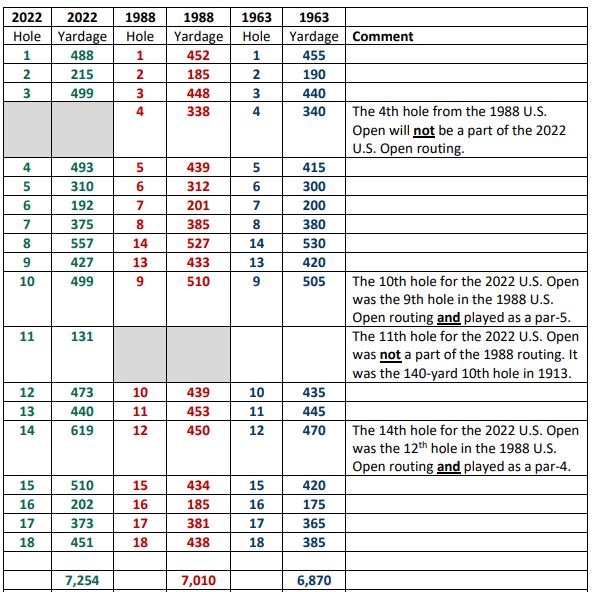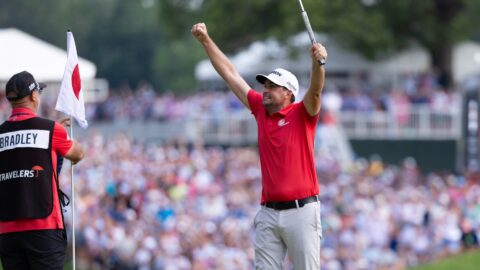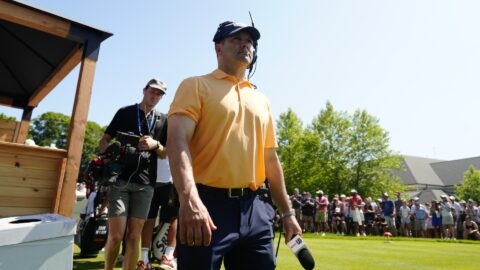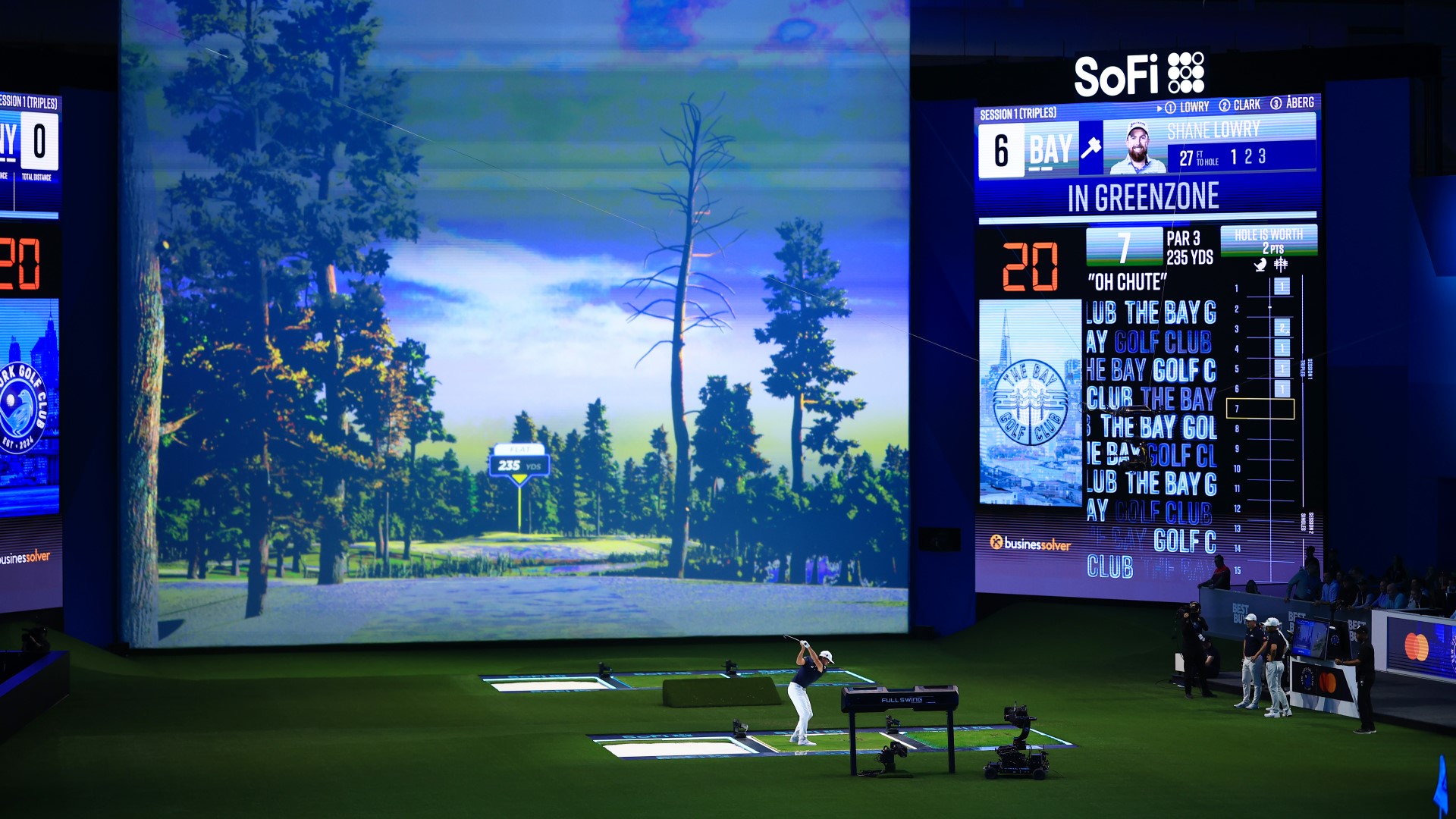The U.S. Open returns to New England this week, and quite frankly, it's been way too long.
The Country Club in Brookline, Mass., one of the most famous, historic golf courses in the world, will play host to the national championship beginning Thursday morning. It's the fourth U.S. Open held at TCC but the first since 1988. It also marks the biggest golf tournament the Boston area has seen since the 1999 Ryder Cup put Brookline in the spotlight again.
It's also a homecoming of sorts for the USGA. The Country Club's rich history with the game's national governing body predates 1900 when it was one of a handful of historic courses that are essentially the founding courses of the USGA.
And lest there was any debate about the passion of New England golf fans, consider this: When The Country Club first opened, players were so insistent on playing, they defied the commonwealth's blue laws prohibiting play on Sundays. That passion has been evident with every professional golf stop since, and the U.S. Open is a short-term consolation prize for the PGA Tour eliminating Boston as a yearly stop on the calendar. A major returning to the region is overdue, regardless.
So, as you get set to make your bets and fill out your DFS lineups or you just want to know what to expect this week in Brookline, here's the need-to-know info about The Country Club.
Par: 70
Yardage: 7,254 yards
Average green size: 4,388 square feet (Tour average: about 6,000 square feet)
ROUTING
The Country Club is actually comprised of three separate "courses," and holes from each will be used to create a unique routing that will test the world's best golfers. Perhaps the coolest result of that is the tiny par-3 11th hole will return to U.S. Open play for the first time since Francis Ouimet's famous 1913 win. At roughly 130 yards (and downhill), it will play as one of the shortest holes in tournament history.
Famed golf course architect Gil Hanse added The Country Club to his impressive list of historic restorations about a decade ago.
Here's Hanse talking about how the changes he and his team have made over the years will be seen on the 11th:
TERRAIN AND LAYOUT
TCC is uniquely New England. Flat ground is hard to come by out there, as most of the holes will play through varying levels of undulation, leading to blind approach shots.
It's, as you might expect, absolutely beautiful.
"It's a rugged piece of ground," he told The Fried Egg. "It's a rugged golf course. ... In New England, it's hard to find perfect ground."
Combine that with the small greens -- only Pebble Beach has smaller greens of any course in major championship golf -- and you have an even greater emphasis on ball-striking. A lot of the tiny greens also slope, so don't be surprised to see players hit greens only to watch the ball roll off either into one of a least 40 immediate greenside bunkers or back down into the fairway.
“It’s going to be an interesting mental test because many of these guys are going to see holes they’ve never seen in their lives," Hanse told Golf Digest. "They’re going to have to play some shots that aren’t going to register on their fairness meter."
There should be plenty of talk about the small greens, but part of the restoration included adding some size to the green complexes, allowing the USGA some more (presumably diabolical) pin positions.
That's not to say there aren't scoring holes out there, though. Players will have to take advantage of some of the shorter par-4s like the 17th -- site of Justin Leonard's famous putt in the '99 Ryder Cup -- and some of the "easier" par-5s.
Players also should do their best to take advantage of the flatter pieces of property that bookend the round: Nos. 1 and 18. Back in the day, those two holes used to make up a horse-racing track that dates back to the club's inception.
THE USGA FACTOR
We've seen in recent years how the USGA likes to leave its imprint on the U.S. Open. The two biggest ways they've done that are laying out the course as long as possible and growing up the rough to laughable heights.
For instance, as No Laying Up noted in its preview video, the owner of a property along the course actually loaned out part of their yard for a tee box on the par-4 fifth. A temporary fence has been built just for the tournament.

As for the rough, it's going to be thick, as always. Whether someone with length can attack the course like Bryson DeChambeau did at the 2020 U.S. Open will be the big question. DeChambeau won that tournament at Winged Foot by hitting it as far as he could off the tee, accuracy be damned, and then using his strength to muscle the ball out of the rough and run it up around the greens. That strategy, though, might not play in Brookline.
"I'm not sure something like that works at The Country Club because you've got a lot of fescue and bluestem, so you've got native (grass)," Hanse told The Fried Egg. " … There's a lot more unpredictability at The Country Club."
Harvard golfer Jeffrey Fang, who has access to the club as a member of the Crimson, agreed: "You lose a disproportionate amount of shots by not hitting the fairway at TCC," he told Golf Digest. " … But at TCC, if you put yourself in a bad spot where you’re either in the rough, or you just have a terrible angle, you can easily lose one or two shots per one of those mistakes."
WHAT'S IT TAKE TO WIN?
As is typically the case, the U.S. Open's hallmark -- rewarding the best golfers -- should come through once again. This year, perhaps more than any in recent memory, should present an overall test of golf. It sounds rudimentary, but to win, you're going to need to be able to hit it long and fairly straight. You need to have a solid approach game in order to hit the small greens. And you obviously can't suck at putting, though it will be interesting to see whether the smaller complexes open the door for some faulty flatsticks to hang around. Around-the-green play comes into play with the smaller targets, too.
Add it all up, and you're probably looking at a very small list of legitimate contenders, which is just the way the USGA likes it.
Of all people, perhaps No Laying Up's Todd Schuster, aka Tron Carter, summed it up best in their U.S. Open preview video.
"There's just a lot of funky, old-school s--- out here that guys are going to have to put their big-boy pants on and not blame the USGA if they get a bad bounce -- no, that's golf, man."




